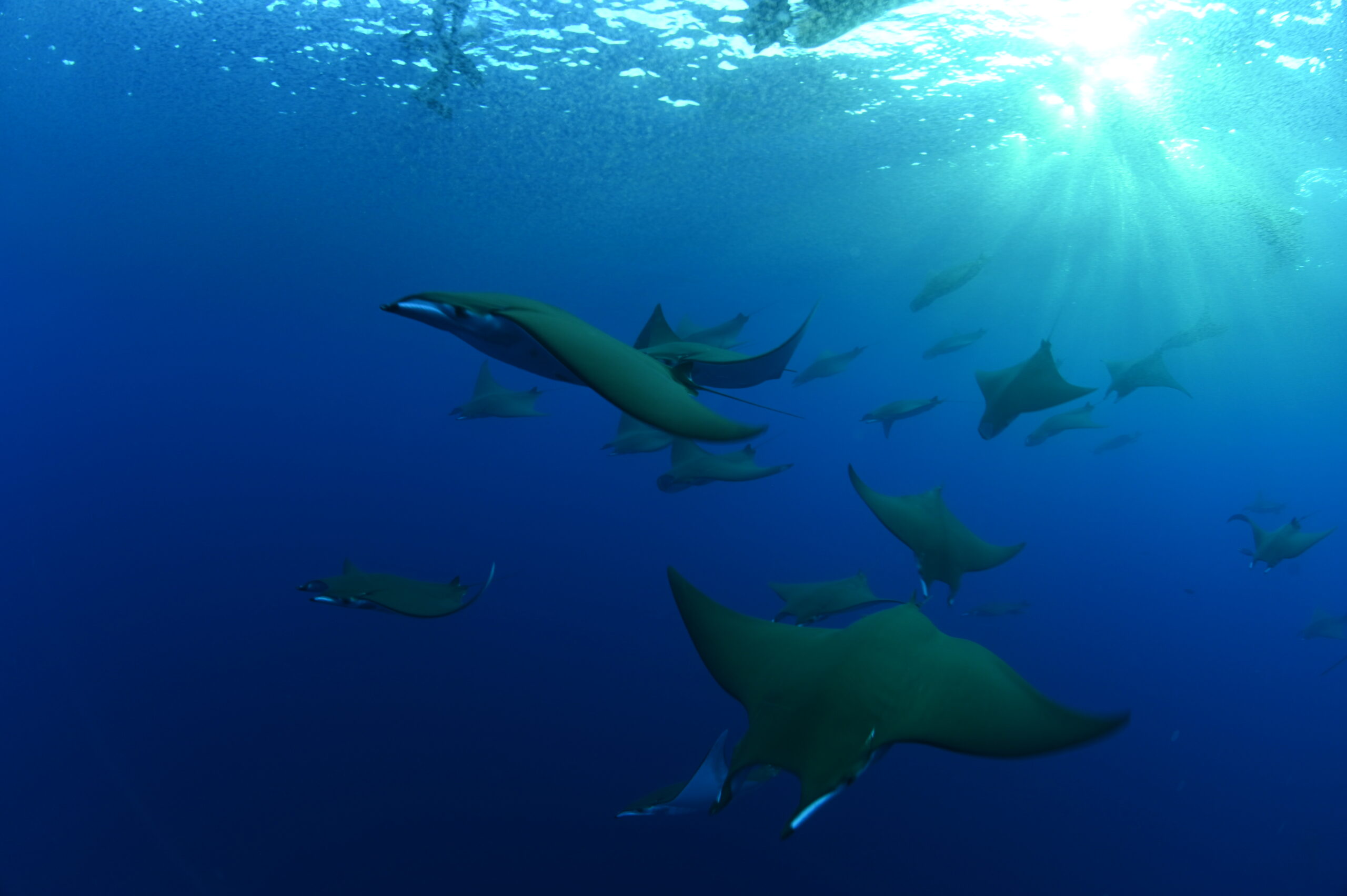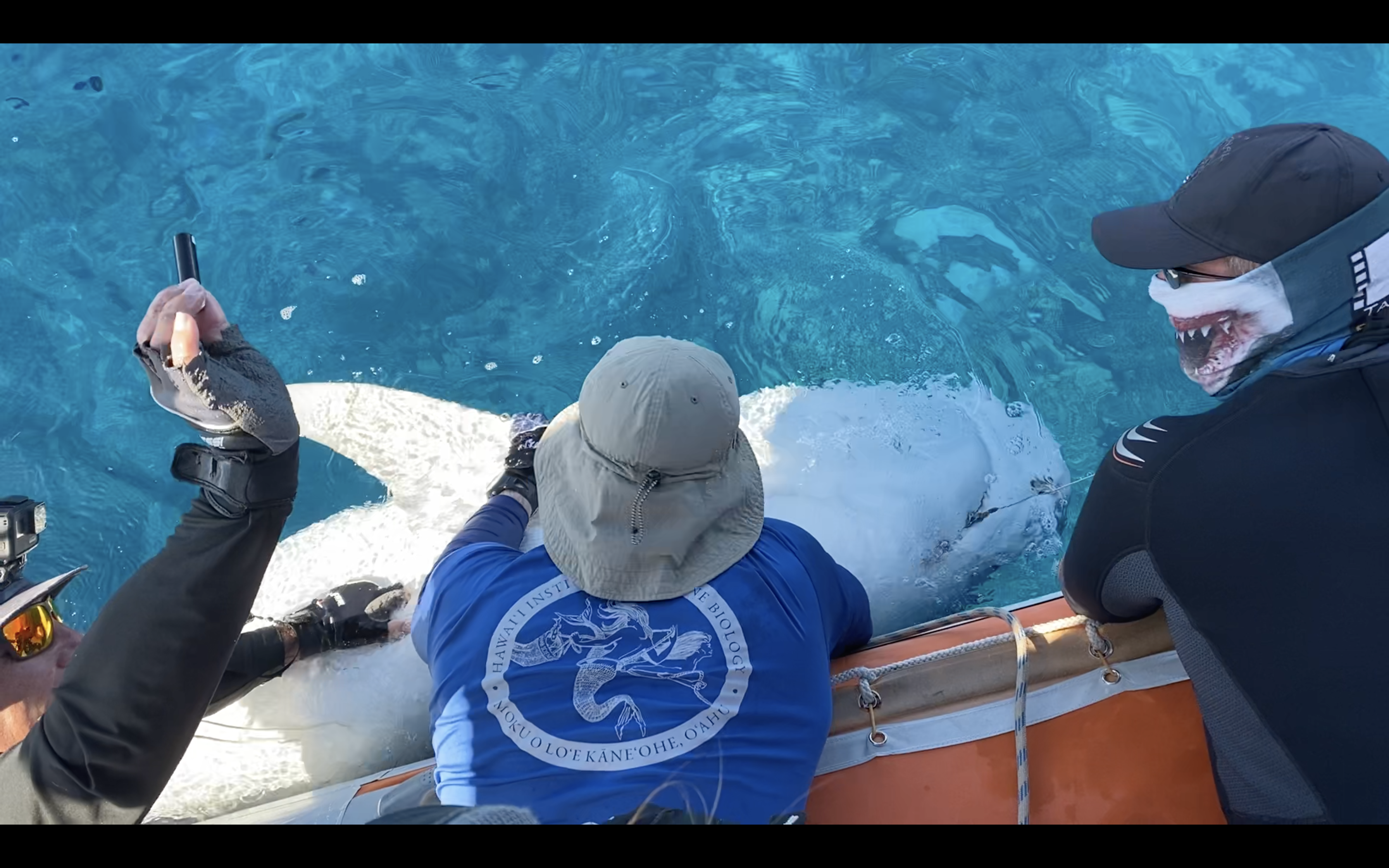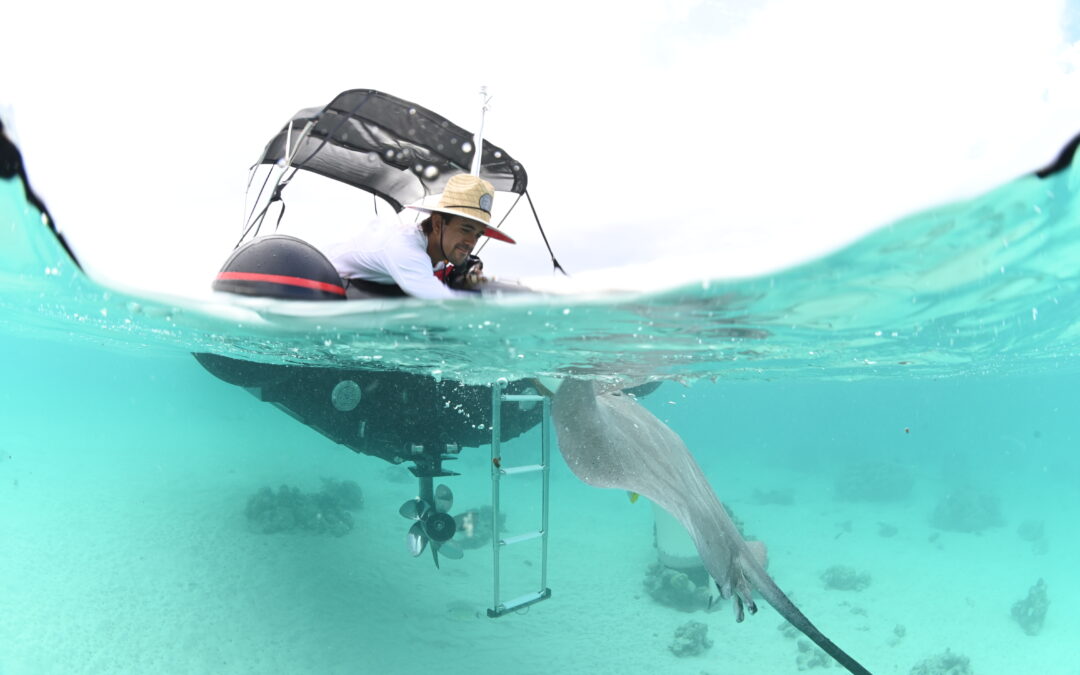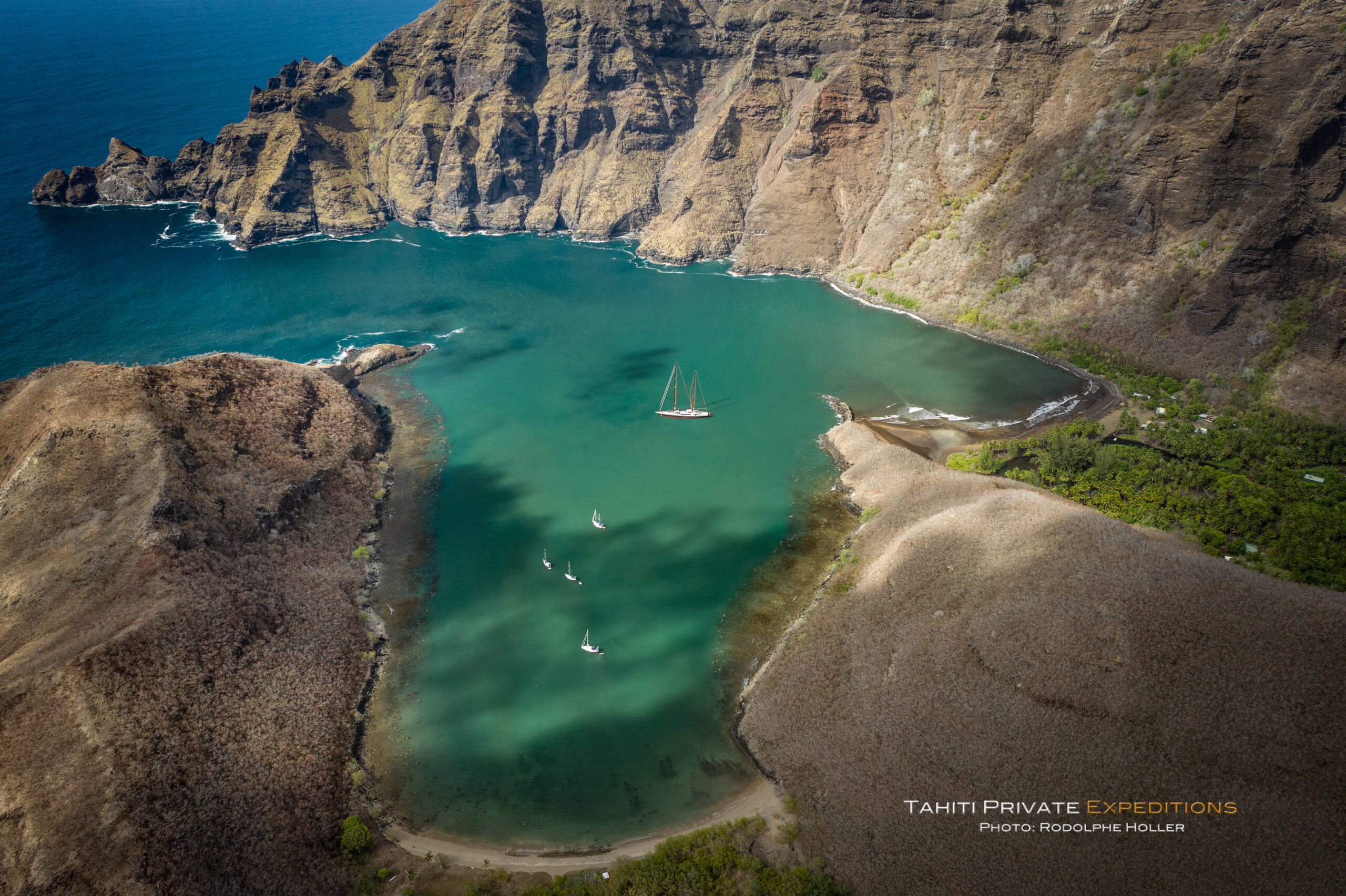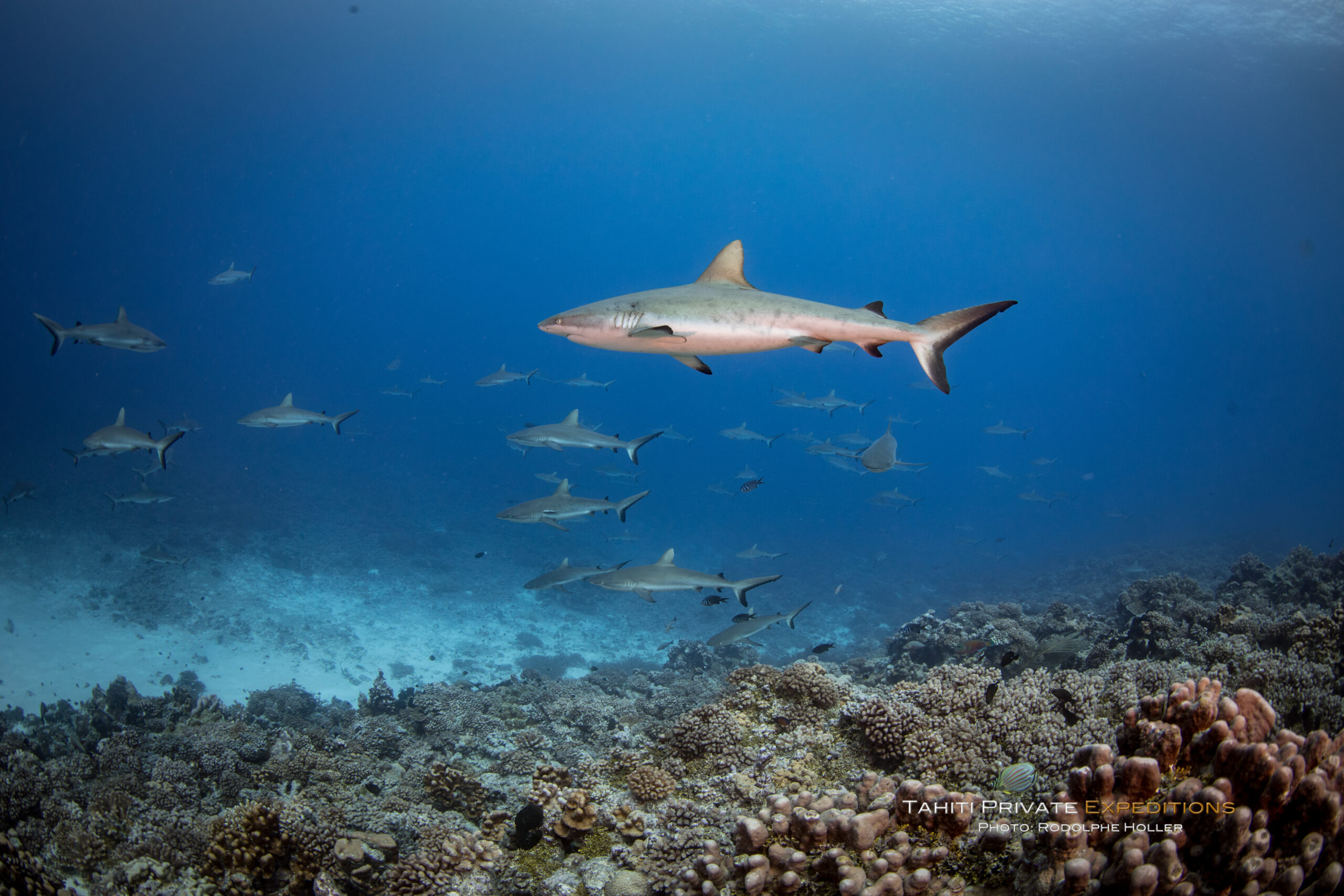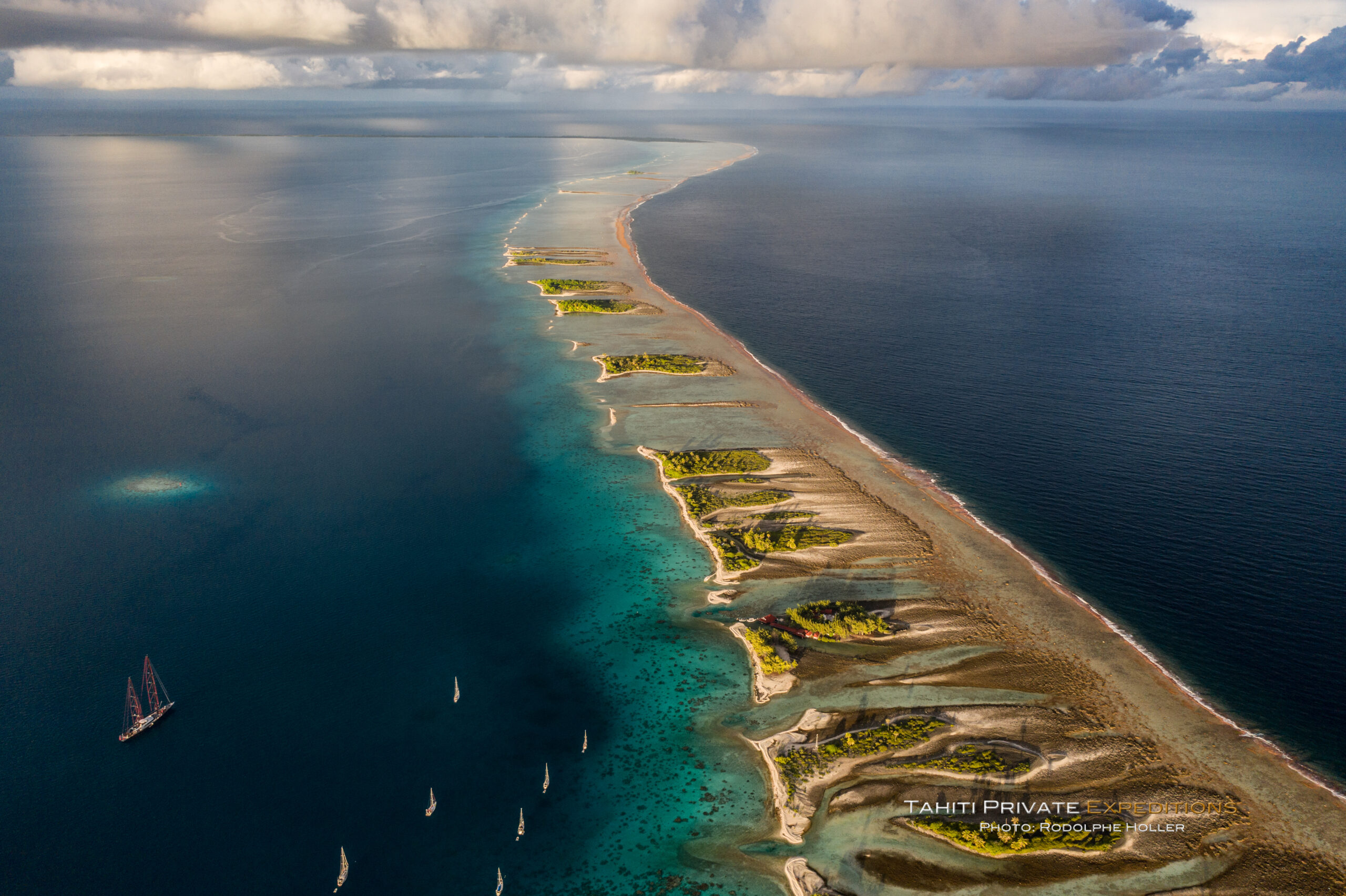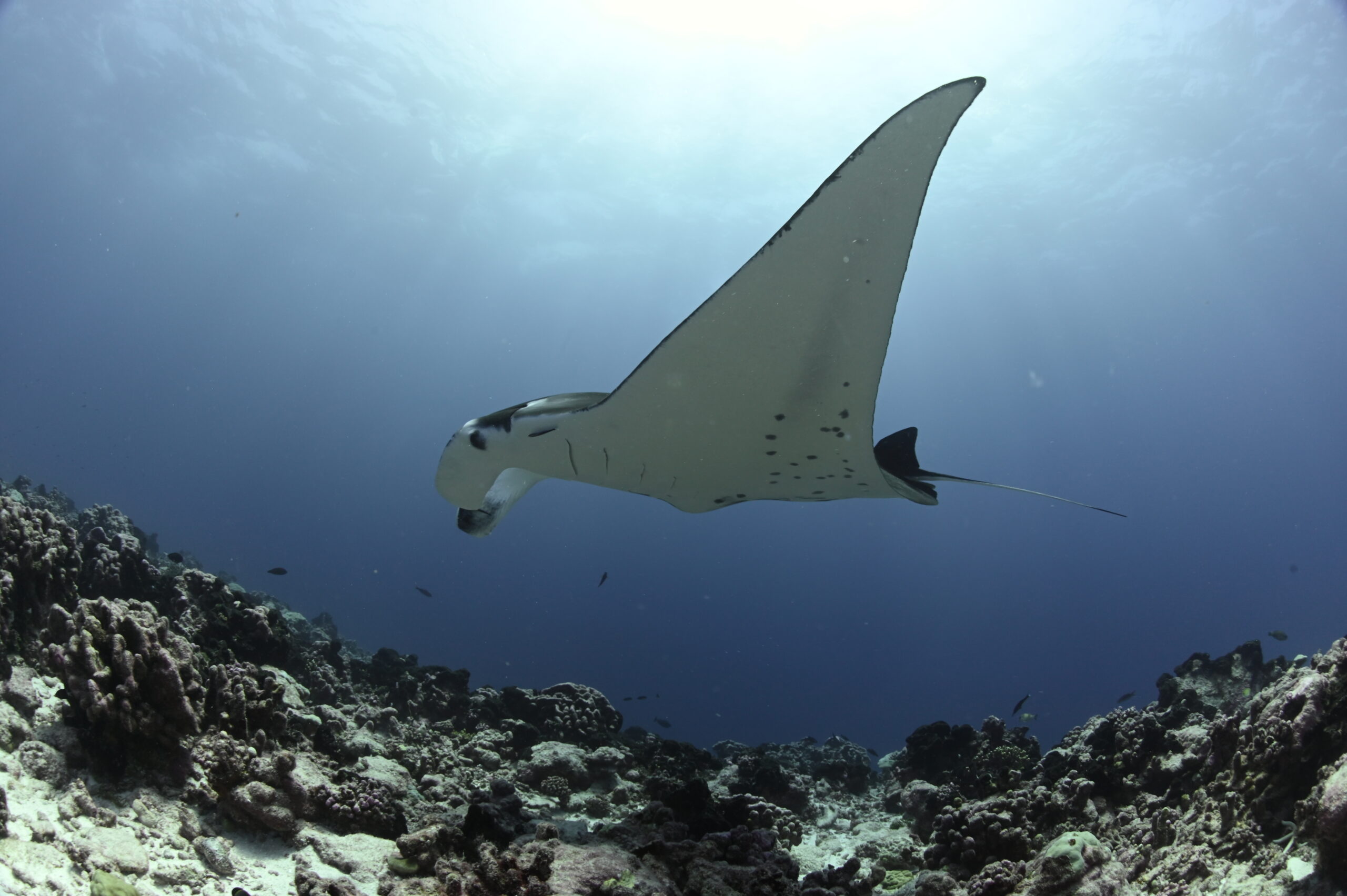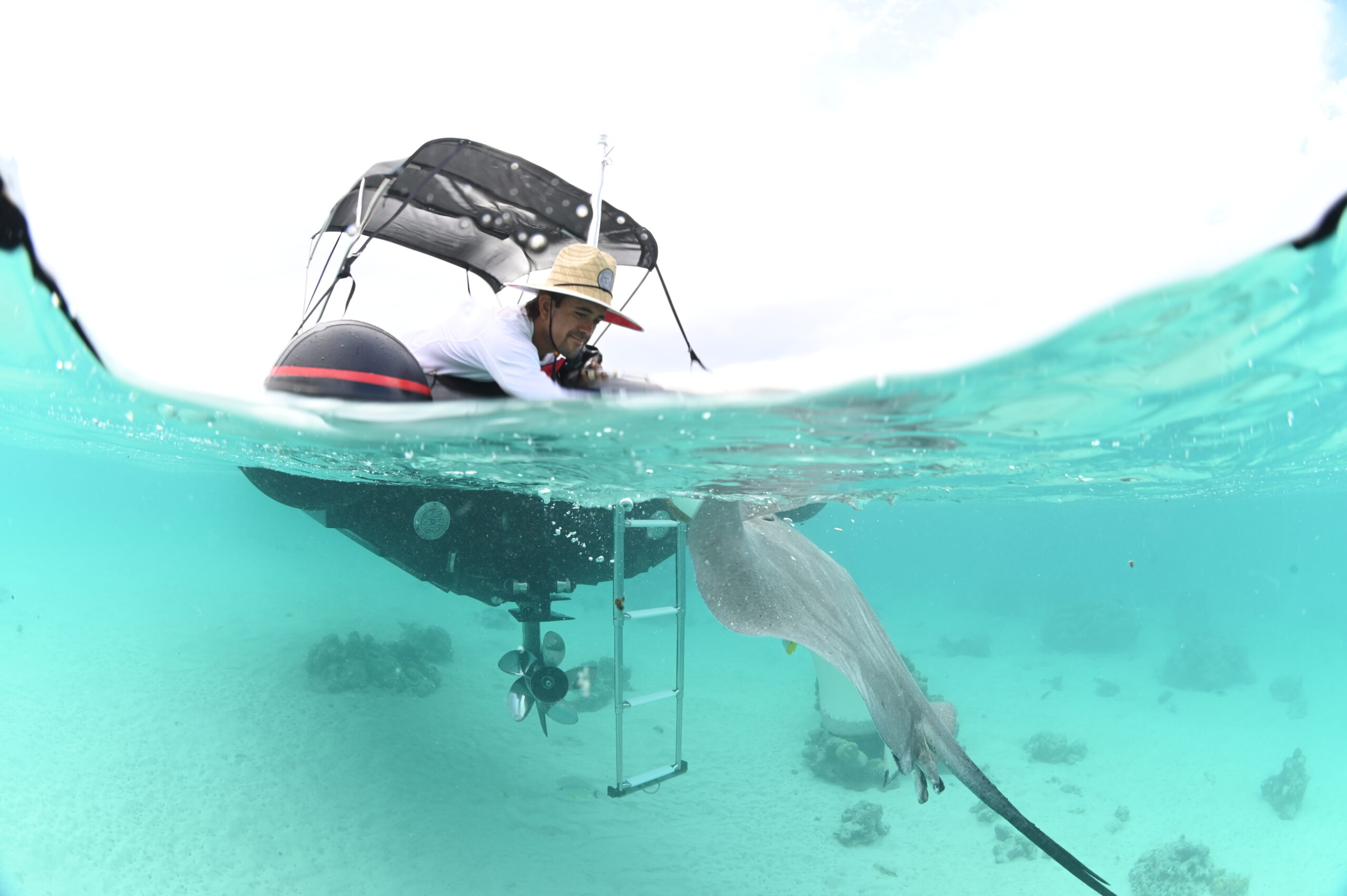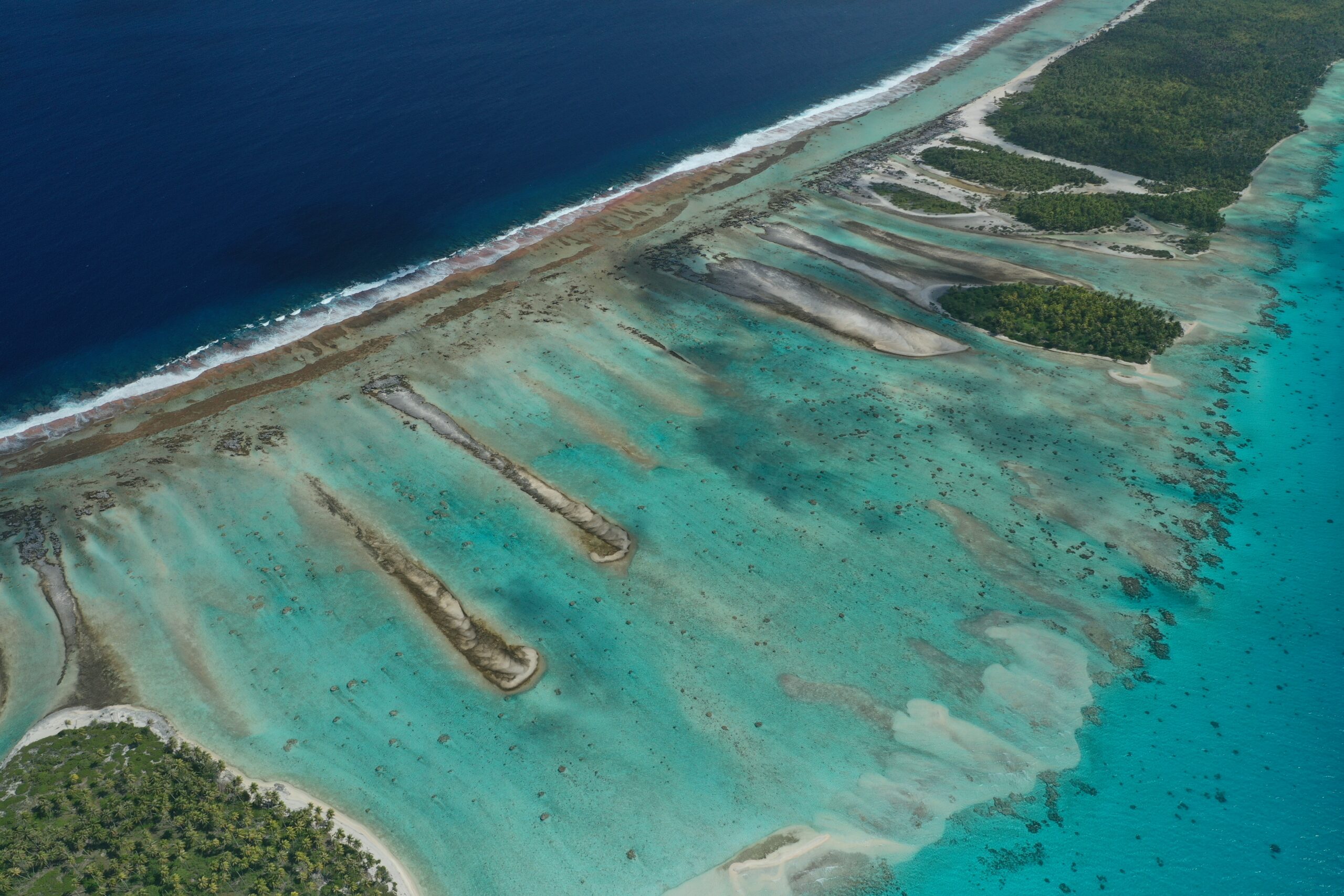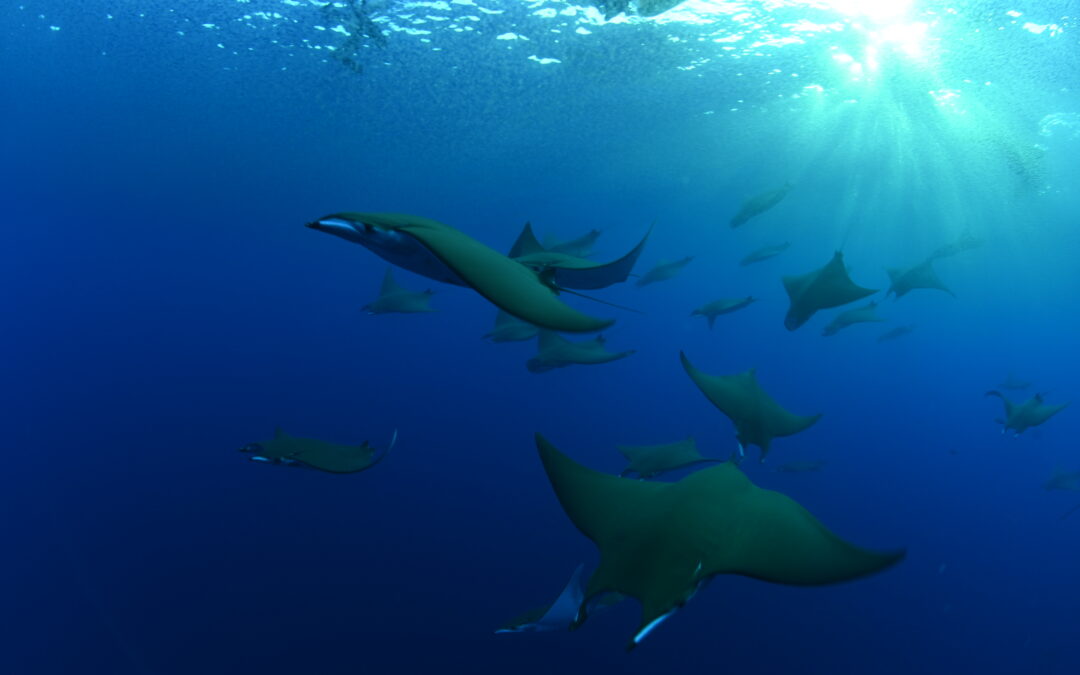
French Polynesia, Part II: Supporting Research in the Tuamotus
We had been navigating the French Polynesian waters for 6 weeks before our new Operation Swimway began in the Tuamotus Archipelago. After visiting some of the remote Marquesas islands, cruising the pristine waters of the Western Society Islands, and experiencing the culture in Tahiti and Moorea, we were set to start the next science expedition on board Seahawk.
For this trip, we were joined by a team of renowned marine researchers from top universities in the U.S and France; Eric Clua, Ph.D., shark specialist and professor at Centre de Recherches Insulaires et Observatoire de l’Environnement (CRIOBE); Mark Royer, Ph.D., Shark expert from the University of Hawaii; and Clémentine Séguigne, shark ecologist and Ph.D. student at CRIOBE. Planning and logistics for this mission were also arranged with YachtAid Global and Carl Meyer, Ph.D., professor, and researcher at the University of Hawaii.
Rodolphe Holler, our local guide and videographer throughout our time in French Polynesia, and his assistant Tearenui Poole joined the trip with their boat ‘Coconut’. Rodolphe’s expertise and understanding of the area were key for a successful trip and a safe navigation through the different Atolls.
This time, the mission’s goal was to study tiger shark populations in some of the Atolls of the Tuamotus. Specifically, their migration patterns and habitat use across the archipelago.
The research focused on tiger sharks as there’s still a lot to learn from them within their Polynesian habitats. Existing studies in the country have shown a population predominantly female from sightings around shark ecotourism sites, with males being a minority and seen more often in pelagic environments. Although photo-id studies have shed light on females’ reproductive biology, more studies needed to be conducted to deepen the knowledge of sharks’ habitat use and behavior in the Polynesian waters.
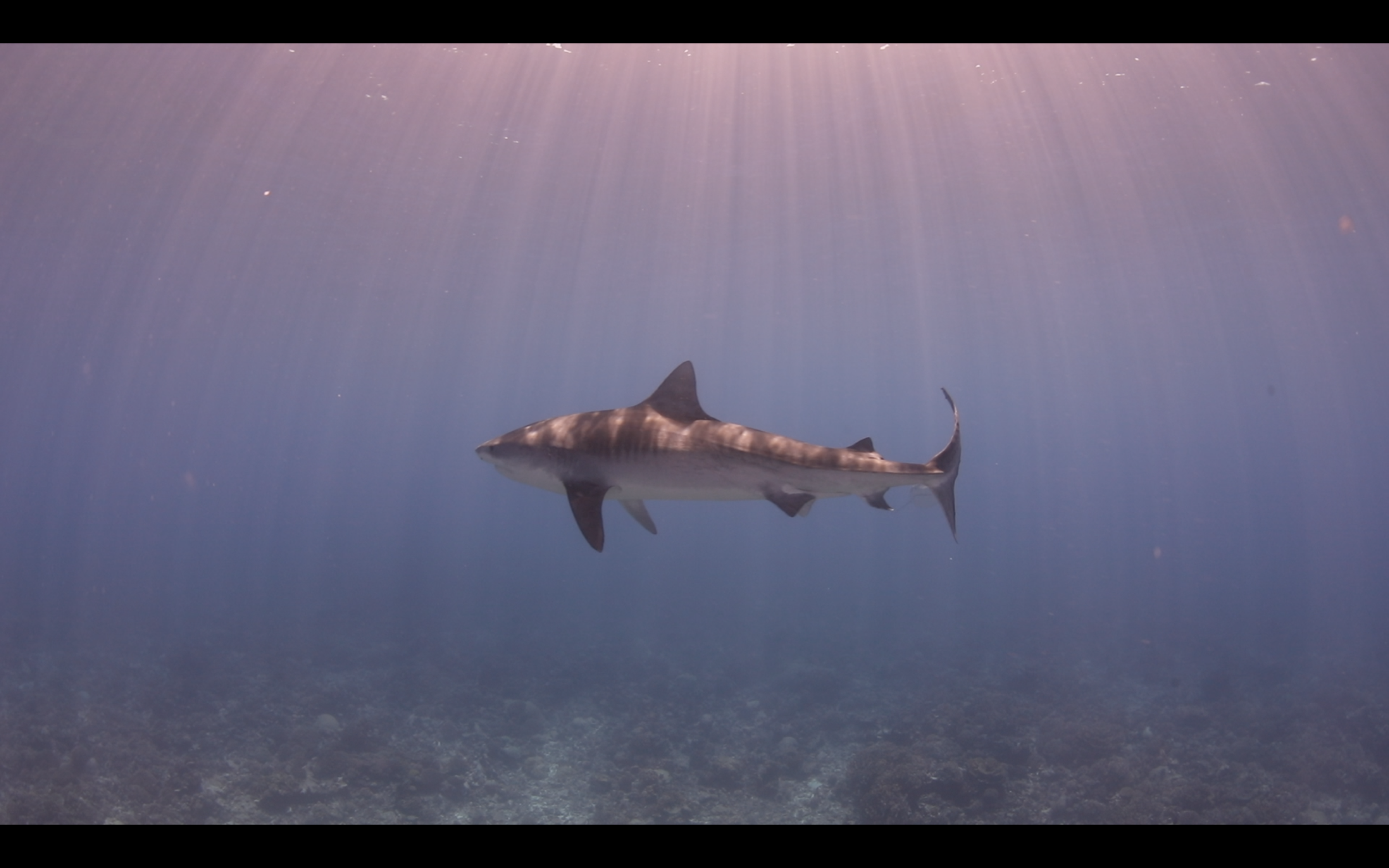
The objective of the project conducted in the Tuamotus, therefore, was the tagging of several individuals, the installation of new acoustic receivers, and the recuperation of old ones to recover previous data.
Our expedition began in the atoll of Makemo, located in Central Tuamotus. From there, we started a 10-day trip that was action-packed, with an itinerary that incorporated some of the archipelago’s most remote corners, where we found ourselves looking for tiger sharks, diving the extreme passes of the atolls, and even swimming alongside the rare Chilean Devil Rays (Mobulas Tarapacanas) in Raroia, as Eric collected DNA from them.
Another interesting experience was joining the scientists in their “recovery dives”, where we would drop at a location where previous receivers had been placed, to grab them and place new ones. These dives were challenging at times, due to the receivers being broken off and swept away by the strong currents of the passes. Due to the COVID lockdowns, some of the receivers had been in place for 2 years or more. Finding them was always a reason for an underwater celebration.
Fortunately, the data collected from these older receivers was worth the long search, as it had very valuable information on some of the sharks’ long migrations across French Polynesia. To be precise, a particular individual often sighted in Tahiti was recorded to have traveled several times to Hao (900km away!), proving the shark’s long-distance journeys.
The trip also included a visit to a local school in Hao, where Eric gave a presentation to students, aged 10 to 16, and taught them about sharks and their importance within the ecosystems they inhabit. The goal of the presentation was to educate the young generations about sustainable fishing practices, and why it is important to keep sharks alive in order to keep reefs and fish populations healthy. It was inspiring to see the great interest the children showed, and how knowledgeable some of them were, as they come from families that heavily depend on fishing as a source of income.
As for the shark tagging, the science team managed to tag a total of 4 tiger sharks (3 of them in one day!); A remarkable accomplishment, considering that a total of 10 sharks had been tagged in 7 years. It was also an unforgettable experience for guests and crew on board, as most were able to be present during the tagging.
However, this trip also made us face a hard reality. During one of our dives, in Raroia, we came across a dead black tip reef shark that showed signs of stabbing. A gruesome sight that most likely indicated that it had been killed for being a nuisance to fishermen. There is still work to be done in educating the population about shark conservation. Unfortunately, that isn’t just a local concern, but an international one.
On a positive note, thanks to the researchers’ accomplishments during the trip, a broader picture of these sharks’ spatial movements across the different atolls and further islands such as Tahiti is now underway. Hopefully, the new data will provide meaningful insight to protect key areas that serve as mating and pupping grounds for these animals, as well as create protected corridors for them to travel across islands safely.

